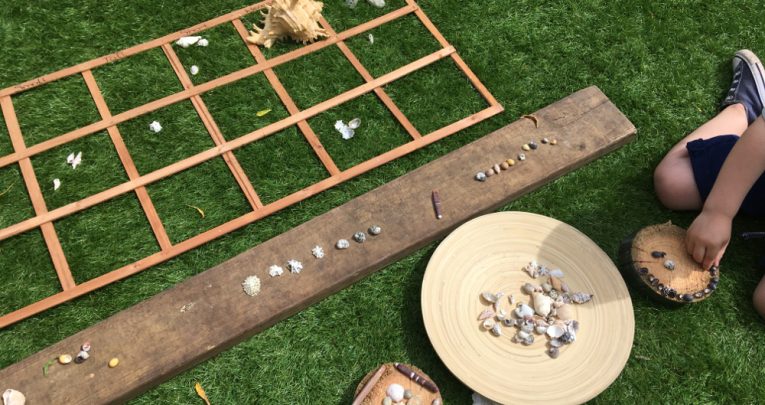3 Cheap And Easy Ways To Transform Your Provision And Enthuse Early Years Children

“Our mud kitchen is buzzing with excitement and learning opportunities!”

Enthusing your children doesn’t have to be expensive – a trip to Poundland, a car boot sale or even the attic can transform your provision, as Laura England explains…
Changing kitchens
Our mud kitchen was lacking inspiration and needed a new lease of life to excite and entice the children. We decided to create a completely new area by propping up an old sink on top of a couple of crates – this worked really well and didn’t cost us a thing as we found everything we needed in the attic. Remember that one man’s trash is another man’s treasure, so don’t be afraid to ask parents what they might be getting rid of.
We added interesting pots, pans and utensils, sourced from a car boot sale, and filled plastic sweet jars with all sorts of natural materials, including mud, leaves, seaweed, shells, pebbles, sliced oranges and petals. Finally, we added a balance scale (simply hang two bowls from a hanger) and a couple of cable reels for extra preparation space. Now our mud kitchen is buzzing with excitement and learning opportunities!
Hunting for language
 Using an inexpensive trellis from Poundland we’ve created a language grid. We simply added words to the edges of the trellis, placed it on the floor within our continuous provision and went on a language hunt. We have used the grid on its own – we added words such as ‘spikey’, ‘rough’, ‘smooth’ and ‘old’ to encourage children to think about these words, and to find items that fit the description.
We have also used the grid alongside specific objects, using shells we explored mathematical language. To our grid we added the words ‘small’, ‘big’, ‘tall’ and ‘short’. The children then sorted the shells into the categories; this involved lots of problem-solving as many of the shells fitted into more than one category.
Using an inexpensive trellis from Poundland we’ve created a language grid. We simply added words to the edges of the trellis, placed it on the floor within our continuous provision and went on a language hunt. We have used the grid on its own – we added words such as ‘spikey’, ‘rough’, ‘smooth’ and ‘old’ to encourage children to think about these words, and to find items that fit the description.
We have also used the grid alongside specific objects, using shells we explored mathematical language. To our grid we added the words ‘small’, ‘big’, ‘tall’ and ‘short’. The children then sorted the shells into the categories; this involved lots of problem-solving as many of the shells fitted into more than one category.
For younger children, try using the trellis to search for shapes and colours within the environment and for older children, try searching for items that ‘roll’ or items that are ‘squishy’.
Appreciating the process
Young children get much more out of exploring media and materials when they are free to use them in their own way. Recently we’ve been offering them paints and fabrics. We started with a scrap of cotton and some powder paints – some of the children mixed the powder with water prior to applying it to the fabric while others opted to scatter powder onto the fabric before using a wet paint brush to merge the colours.
Whichever option was chosen by the children, they were all highly engaged and fascinated by the way the powders changed with the addition of water.
To celebrate the children’s art we hung each piece in different ways, some in embroidery hoops and some using sticks or bamboo pieces. For both the children and me it was important to appreciate the process rather than the outcome – although, I think you’ll agree the outcome is amazing!
Laura England is preschool leader at Blythe Bridge Day Nursery. Follow @littlemiss_ey.











